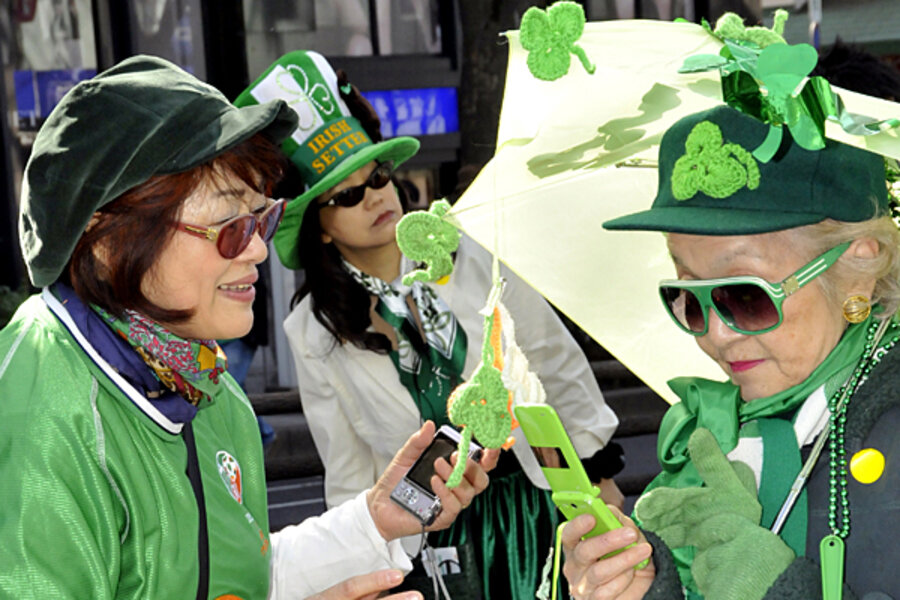St. Patrick's Day: Why do we wear green?
Loading...
“There are only two kinds of people in the world,” an Irish saying goes. “The Irish and those who wish they were.”
But for 24 hours this Wednesday, that saying is a pot o’ blarney. This St. Patrick’s Day, we’ll all be Irish.
St. Patrick's Day was originally a Roman Catholic feast day for Ireland’s patron saint, celebrated only in Ireland since before the 1600s. But it evolved into a secular holiday in the 1700s, when Irish immigrants in the US held some of the first St. Patrick’s Day parades. More than a show of patriotism, the parades were an opportunity for Irish immigrants to make a political statement about their discontent with their low social status in America.
IN PICTURES: St. Patrick's Day parades around the world
Today, St. Patrick’s Day is a transcontinental celebration of Irish culture, replete with festive food and traditions. Ever wonder why we eat corned beef, wear green, and pinch our friends on St. Patrick’s Day? Read on to discover how three St. Patrick’s Day traditions came to be.
• Why green?
According to some accounts, blue was the first color associated with St. Patrick’s Day, but that started to change in the 17th century. Green is one of the colors in Ireland’s tri-color flag, and it has been used in the flags of several Irish revolutionary groups throughout history. Ireland is the “Emerald Isle,” so named for its lush green landscape. Green is also the color of spring, the shamrock, and the Chicago River, which the Midwestern city has dyed green on St. Patrick’s Day for the past 40-odd years.
• Corned beef or bacon?
This St. Patrick’s Day, millions of people will sit down to an authentic Irish meal of corned beef and cabbage. Or so they think. In fact, only half of it is really Irish. Though cabbage has historically been a staple of the Irish diet (along with potatoes), it was traditionally eaten with Irish bacon, not corned beef. Irish immigrants in America could not afford the bacon, so they substituted it with corned beef, a cheaper alternative they picked up from Jewish immigrants.
• Pinch me, I’m Irish
Forgot to wear green on St. Patty’s Day? Don’t be surprised if you get pinched. No surprise, it’s an entirely American tradition that probably started in the early 1700s. St. Patrick’s revelers thought wearing green made one invisible to leprechauns, fairy creatures who would pinch anyone they could see (anyone not wearing green). People began pinching those who didn’t wear green as a reminder that leprechauns would sneak up and pinch green-abstainers.





